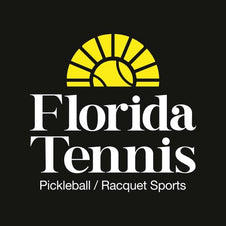Inside Sport Surfaces: Building Courts for Tennis, Pickleball, and Padel
May 12, 2025
With tennis clubs across Florida expanding into pickleball and padel, construction standards and long-term maintenance are becoming a priority. Paul Gold, CEO and president of Sport Surfaces, has been at the center of this shift, overseeing court projects since 2007. “We take a systematic approach to everything we do,” he says. “We’re licensed general contractors and civil engineers, so we can handle all aspects of a project.”
Sport Surfaces has evolved from its roots in tennis construction to a firm that now designs and services multisport facilities across the state. “Our design team includes 10 engineers and architects,” Gold explains. “We also use laser grading equipment and have an in-house surveying team, which helps maintain high precision.”
That level of precision is increasingly important as clubs invest in more than just tennis. “Pickleball has exploded,” Gold says. “But the fastest-growing sport in the world right now is padel.” Though many people are still unfamiliar with it, padel’s popularity is rising, thanks to its fast-paced, social style and smaller court size. “It brings together elements of racquetball, pickleball, and tennis,” he says.

Photo credit: Ugccp, CC BY-SA 4.0, via Wikimedia Commons.
Gold, who has a padel court at home, notes how quickly players connect with the sport. “This is the funnest sport I’ve played next to tennis,” he says. “It’s a little easier to learn than tennis and more challenging than pickleball.”
But padel construction comes with challenges many clubs may not anticipate. “Padel courts require serious engineering to meet local permitting standards,” Gold says. “We get a lot of calls from clients who bought prefabricated courts from overseas and didn’t realize the local requirements.”
He emphasizes the importance of understanding Florida’s building codes—especially in areas prone to hurricanes. “If you install a court without a permit, you may be forced to remove it,” he warns. “Getting everything approved upfront is critical.”
Another consideration with padel is its glass enclosure. “If glass breaks and the supplier isn’t local, replacement can take months,” Gold says. “We use safety glass that stays intact when shattered, but even then, quick service is key to avoid long closures.”


Photo credit: Sport Surfaces.
Sport Surfaces also provides ongoing service to facilities with annual or biannual maintenance plans. “We add sand to synthetic surfaces, fix lights, and make minor repairs,” he says. “Preventive maintenance extends the life of a court and delays the need for resurfacing.”
How often a court needs resurfacing depends on the surface type. “Clay might need laser grading every three to five years,” Gold explains. “Hard courts usually last four to five, and modular tile courts can go 15 years or more.”
He recommends regular cleaning and inspections. “Hard courts should be cleaned at least twice a year,” he says. “If you don’t maintain your courts, you’ll end up spending more in the long run.”
When clubs look to add multiple sports, space and planning become even more important. “We advise looking at your community demographics, competition, and usage trends,” Gold says. “We use AI tools to help our clients make informed decisions about layout and long-term profitability.”

Photo credit: Sport Surfaces.
According to Gold, one of the most common mistakes clubs make is prioritizing cost over quality. “Sometimes saving a little money upfront ends up costing a fortune,” he says. “We’ve seen projects where fencing collapsed after the first storm or started rusting within months.”
He points to the importance of working with licensed, bonded, and insured contractors who use quality materials. “Cutting corners isn’t worth it when you consider the lifespan and usage of these courts,” Gold adds.
For those managing racquet sports facilities, the expansion into pickleball and padel presents both opportunity and responsibility. Construction, compliance, and maintenance are all part of the long-term success of any new installation.
To learn more about Sport Surfaces’ services or to explore project options, visit: www.sportsurfaces.com.
Exclusive Interview
===
Written by Florida Tennis Associate Editor Osvaldo Godoy.

